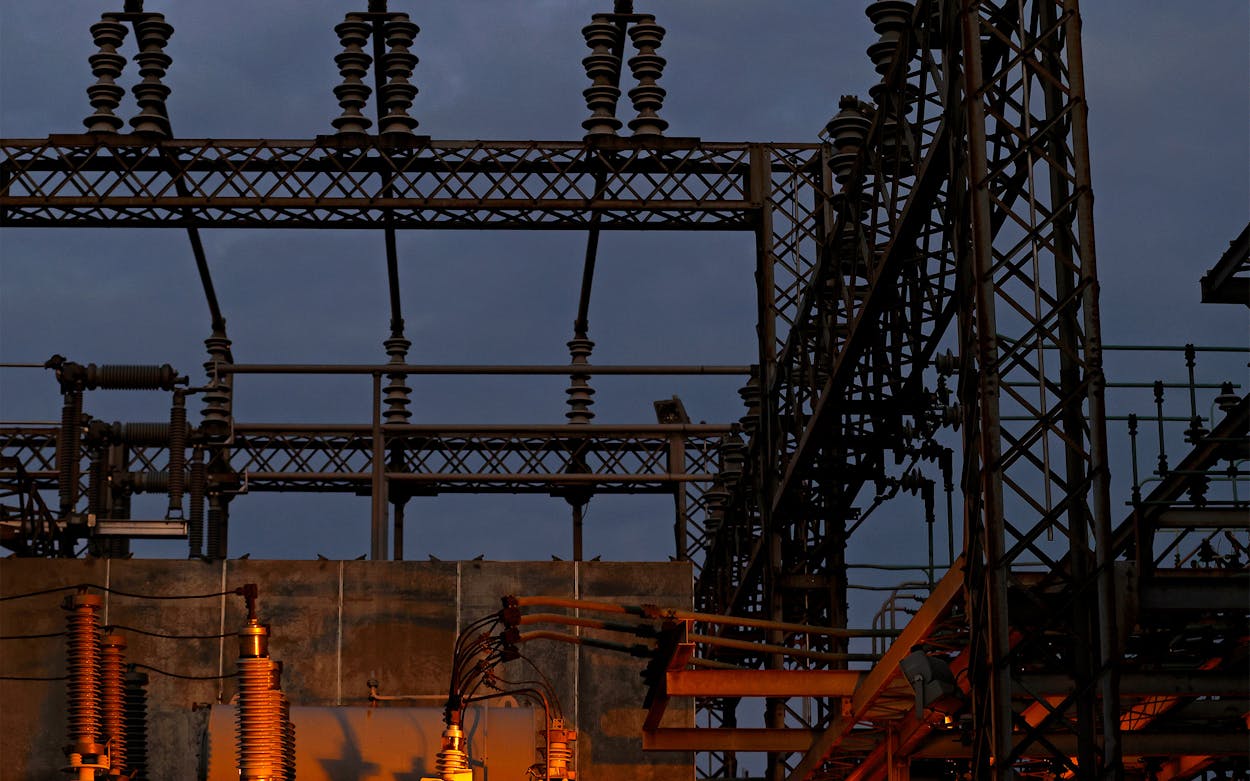After the deadly statewide power outage in 2021, academics, experts, and politicians floated a lot of blue-sky ideas about how to keep the Texas power grid running in all kinds of weather. Some were practical, such as increasing transmission capacity to use all of the solar and wind energy the state is capable of producing, while others were downright fanciful: what if, Ted Cruz posited, we relied on Bitcoin miners to help save the grid?
Texas is, of course, a fanciful place, and while we’ve yet to substantially scale up transmission, that Bitcoin idea won the support of Governor Greg Abbott—and the Texas Legislature, which passed two mining-friendly bills in the last session—and has gone from a bizarre idea to, essentially, plan A for preventing blackouts. Here’s what the junior senator had to say about it back in 2021: “Because of the ability of Bitcoin mining to turn on or off instantaneously, if you have a moment where there’s a power shortage in a power crisis, whether it is a freeze or some other natural disaster where power-generation capacity goes down . . . they become excess reserves that can strengthen the grid’s resilience by providing a significant capacity of additional power to be available for critical services if and when it’s needed.”
According to a press release issued Wednesday from large-scale Bitcoin mining operation Riot, the Electric Reliability Council of Texas, a state entity that manages the grid, paid Colorado-based Riot $31.7 million in energy credits to power down its computers during peak demand in August. On the bright side: the grid held, and we didn’t experience rolling blackouts (to say nothing of the sort of huge failure we saw in 2021). On the other hand: that’s $31.7 million handed over to just one Bitcoin miner, which we all pay for through our electric bills. And Riot is but one of several big Bitcoin miners operating in the state—not to mention the smaller operations—though we won’t know how much those companies have been paid until they make announcements of their own. On Wednesday, Riot CEO Jason Les boasted about the company’s “unique power strategy.” During the rest of the month, when Riot was performing its core operation—mining Bitcoin—it created $8.59 million worth of the cryptocurrency.
“Bitcoin mining” obfuscates what’s actually happening here. Bitcoin “mines” are actually math problems that escalate in complexity as more coins enter circulation, and which require immense amounts of computing power to solve. That work takes place in expensively air-conditioned data centers the size of large warehouses. As the equations are solved, new bitcoins are minted, and they become the property of the person or entity whose computers found the solution.
Bitcoin mining is a significant driver of energy demand in the state, accounting for as much as two gigawatts of power—or enough to power about 200 million LED lightbulbs. Using large amounts of electricity, and then agreeing to turn off that electricity when the state’s total demand exceeds supply in exchange for millions of ratepayer dollars in payouts, doesn’t seem fair to the rest of us, who just want to keep the lights on and the AC blowing.
Riot operates two Bitcoin-mining facilities: one in Rockdale, between Austin and College Station, and one in Corsicana, between Dallas and Waco. On the one hand, the strategy of paying Bitcoin miners such as Riot to turn off their computers when Texas needs the electricity for other businesses and homes appears to be helping to prevent rolling blackouts. On the other hand, the resulting situation, in which it’s vastly more profitable for Bitcoin miners to turn off their business than to actually operate that business, creates some curious incentives.
According to Riot, the company mined 333 bitcoins in August. Bitcoin prices fluctuate. In the past month, its value has ranged from around $25,000 per coin to $30,000 (at press time, a single bitcoin was worth $25,757). At its 2021 peak, a single bitcoin was worth nearly $69,000, more than double today’s price. Because the complexity of the problems that Bitcoin miners must solve keeps increasing, back in 2021 it was less energy-intensive to mine a coin. Now it requires more energy to produce something less valuable.
In July, when the grid was under less-severe strain, Riot mined 410 bitcoins, worth around $10.5 million, and the company received an additional $7.8 million from ERCOT. When things started to heat up in August, though, and the ERCOT power credits really started flowing, Riot lucked out—it became significantly more lucrative to power down than to mine Bitcoin, and the number it produced dropped by nearly 20 percent. In a traditional situation, that sort of drop in productivity, along with the dip in market value Bitcoin experienced in August, would mean a company in the Bitcoin business was having a bad month. Instead, Riot sent out press releases touting the rewards it received for unplugging its machines for a while. While the press release doesn’t attribute the difference in the number of bitcoins produced to Riot’s participation in ERCOT’s “demand response” program or the power credits it received, the correlation seems clear: for Riot, Bitcoin in August was literally not worth the energy used to produce it.
- More About:
- Energy








